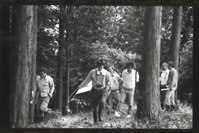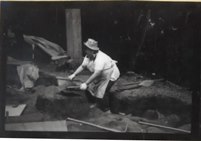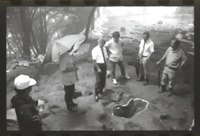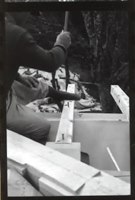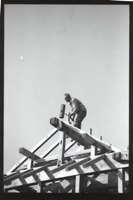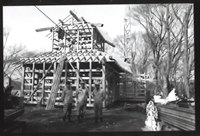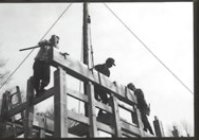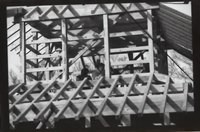History
Asuke Castle stood on the top of the Mayumi Mountain, 301 meters above sea level, and was a connecting style mountainous castle utilizing the ridges that spread in four directions, with Honmaru as its central bailey. The Mayumi Mountain is a site of the stronghold location that overlooks the town of Asuke.
The Asuke Castle is also called the “Mayumiyama Castle”, and at times it was also called the “Matsuyama Castle” or the “Castle of Asuke-Matsuyama”. It is said to be one of the “seven residences of Asuke (Asuke 7 Castles)” where the Asuke Family resided during the Kamakura Period (AD1192~1333). At the excavation survey conducted, however, remains of the above were not found, and the remains that were found are thought to be the castle built by the Suzuki clan after the 15th century.
The Suzuki clan held power over the mountainous area of the West Mikawa Region during the Sengoku period(Warring States Period). Within the clan, the power of the Suzuki of Asuke continued for 5 generations, from Tadachika, Shigemasa, Shigenao, Nobushige to Yasushige. The first castle lord, Tadachika, is said to have lived in the latter half of the 15th century.
Entering the 16th century, the Suzuki repeatedly attempted to break away from the Matsudaira Clan of Okazaki. After 1564, however, the Suzuki fought under the ruling of the Matsudaira, in battles such as the battle of Takatenjin Castle, displaying distinguished service. In 1590, when Yasushige was the lord, he followed Ieyasu Tokugawa in the entry into the Kanto Area, leaving the Asuke Castle. Soon after, the Suzuki decided to break away from Ieyasu, thereby becoming masterless.


